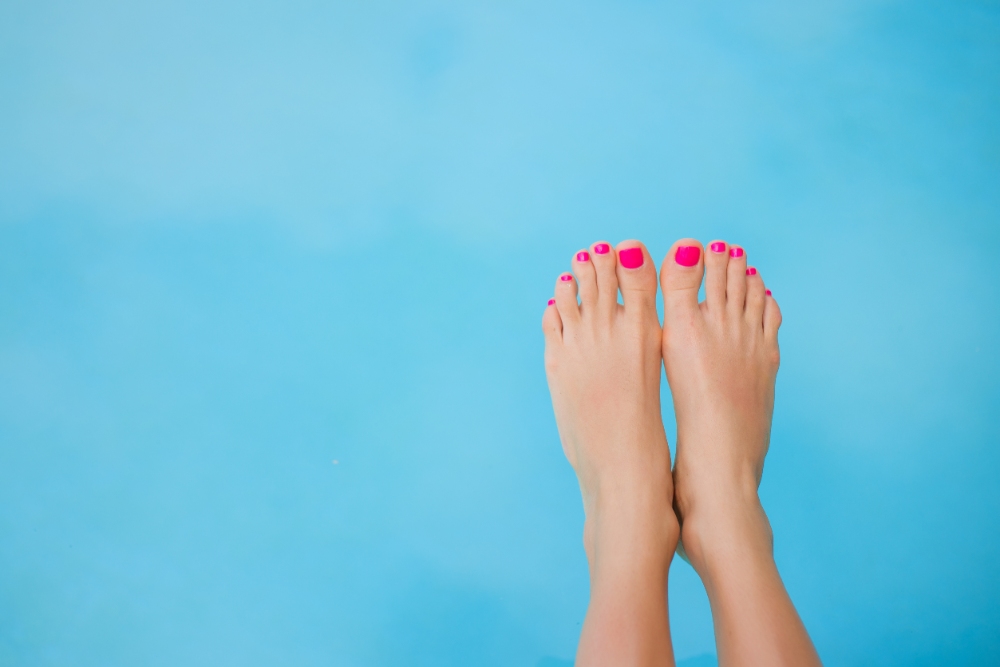Foot Skin Care Tips: What To Do About Blisters, Corns, Calluses, And More
Sandal weather hasn’t completely left us yet in Carson City, with daily highs still expected to crack the 80s for at least a few more weeks. On the other hand, if skin bumps, rashes, and other irritations are all over your feet, “sandal weather” might have ended before it even began.
Skin problems on feet are extremely common for a wide variety of reasons. Just a few of the most common:
- Feet sweat a lot, partially to make up for the fact that there are no oil glands on the soles. That can create a breeding ground for bacteria and fungi if you aren’t diligent about hygiene.
- Poor-fitting shoes and socks can contribute to pressure and friction, which damages skin and can cause blisters, corns, calluses, etc.
- Feet are often the first part of the body to show symptoms of diabetic neuropathy and poor circulation, which can lead to dry skin, more frequent injuries, and slower healing times.
It goes without saying that skin problems can be unsightly and embarrassing. But in some circumstances, they can also be painful or even hazardous to your health, particularly if you have diabetes.
In this blog, we’ll look at what you can do about some of the most common skin problems, as well as give you some general advice on keeping your feet looking great!
Athlete’s Foot
Athlete’s foot is caused by an infection of fungi known as dermatophytes. These microorganisms feast on keratin, and can spread to other areas of your skin (or even your toenails) if you don’t get them under control.
In most situations, athlete’s foot can be cleared in a matter of 4 weeks or so using an over-the-counter antifungal spray, ointment, or powder. Be sure to follow the directions carefully and complete the full treatment course. If your condition does not improve or athlete’s foot keeps returning, stop by our office for stronger antifungal medications and an evaluation of what might be causing your problem.
Blisters
Blisters are a natural response to a sudden, intense increase in friction or pressure on a specific spot in a relatively short period of time. Runners get them pretty frequently, but simply standing and walking all day in tight, uncomfortable shoes can also do the trick.
If possible, try to avoid popping or draining your blister. Cover it first with a bandage or donut-shaped moleskin pad, then gauze. This will ideally protect the blister and allow it to heal on its own.
If your blister is in an extremely awkward or painful location and simply letting it heal on its own isn’t really viable, your best choice is to drain the fluid while leaving as much of the overlaying skin intact (this reduces the infection risk).
Wash your hands thoroughly, swap the blister itself with iodine, and use a sterilized needle to puncture the blister in several spots along its edge. Slowly drain the fluid through these holes, then apply an ointment and cover completely with a non-stick gauze bandage. Check every day to make sure the area hasn’t become infected and is continuing to improve.
Corns and Calluses
Like blisters, corns and calluses are a natural reaction to pressure and friction. In these cases, however, the irritation is usually longer-term, and in response the skin “toughens up” and thickens to protect itself from breakdown.
What’s the difference between corns and calluses? Calluses tend to be long and flat and located on weight-bearing locations, like the soles. Corns, meanwhile, usually form in non-weight-bearing locations (like on or between toes). Because they don’t have that additional pressure, they tend to be more cone-shaped and may be inflamed.
Corns and calluses can go away on their own IF you remove the source of the pressure and friction—usually by switching to a better-fitting pair of shoes. Aside from gently rubbing them with a pumice stone after bathing, do not ever attempt to cut or trim them yourself. If a corn or callus is bothering you to the point of pain, come visit us so we can trim or remove it safely.
Cracked Heels
Skin on your sole can crack, split, and develop deep grooves that can be painful and even pose a risk of bleeding and infection. (Of course, they’re unsightly, too). Essentially the skin becomes dry and inelastic, and splits when forced to deal with too much weight or pressure. Going barefoot, arid weather, poor shoes, and certain medical conditions (including diabetes or inactive sweat glands) could contribute.
Most of the time, cracked heels can be managed at home by washing and moisturizing your feet every day, and if necessary gently smoothing out skin with a pumice stone. Moisturize before bed and put socks on to really help lock it in.
Foot Warts
Warts are grainy, fleshy bumps that can form anywhere on your skin—but are especially common on the hands and feet. Warts are caused by a viral infection, and although they are usually harmless, they can be embarrassing and sometimes uncomfortable if located in a weight-bearing area. They can also spread—to other places on your body, or rarely to others. They also may take years to go away on their own.
If you want to get rid of your warts, don’t bother with any of the home remedies or over-the-counter products you might find. At best, these methods are marginally better than simply waiting it out. At worst, you might end up damaging healthy skin surrounding the wart.
Instead, visit our office. We’ll help you get rid of them in a safe environment. It may take a couple of follow-up appointments to finally eradicate your wart—they are stubborn infections, but eventually they will yield!
General Advice for Healthy Skin
Here’s our shortlist of easy things you can do at home to prevent skin problems on your feet. If you’ve read this far, many of these suggestions are going to sound familiar.
- Wear good, comfortable shoes and socks. Shoes that fit properly and offer plenty of shock absorption, arch support, and “wiggling room” for the toes will help limit the pressure, friction, and shocks that can lead to blisters, corns, calluses, cracked heels, and more.
- Rotate shoes. Here’s a good idea you might not have thought of: Own at least two pairs of “everyday” shoes and wear them every other day. This allows each pair to fully dry between uses, minimizing the risk of bacterial or fungal infections.
- Wash your feet every day. Don’t ignore your feet when you bathe or shower. Make sure you get them nice and clean, and also make sure you dry them thoroughly afterward—including between the toes.
- Don’t go barefoot in public. That’s especially true in places like community showers, pools, or locker rooms. Protecting your feet with at least sandals or shower shoes minimizes the risk of infection transmission, and also offers protection from cuts and scrapes.
If skin problems on your feet become painful, infected, or just aren’t clearing up despite your treatment efforts, be sure to give us a call. We’re happy to help you get your smooth, beautiful skin back! To schedule with us in Carson City, please call (775) 783-8037.
Get In Touch
Address
2350 South Carson St
Suite 3
Carson City, NV 89701
Contact
Call: (775) 783-8037
Fax: (775) 782-3787
OPT-IN To Text:
By texting our office at
(775) 783-8037 from your mobile phone, you are consenting to receive SMS text messages from our staff. Reply STOP to unsubscribe.
*Read our Privacy Policy & Terms and Conditions.
Social




© Sierra Foot & Ankle. All Rights Reserved. Privacy Policy.
Web Design by CP Solutions. Marketed by VMD Services.

